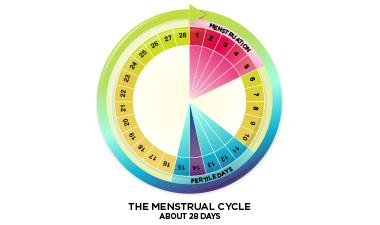It’s important to keep an eye on what you’re eating during your period if you suffer from some of the symptoms associated with PMS. Some foods could be making matters worse, whilst others may be preferable as they contain many of the vital nutrients that we are most likely lacking. In today’s blog post, I discuss which foods to avoid to help reduce uncomfortable monthly symptoms.
What not to eat during periods?
When talking about monthly period symptoms, and those associated with PMS, diet is a vital consideration. However, eating healthily while on your period can be a bit of a challenge for some.
Some women can experience monthly cravings which can be erratic and hard to shift, which means we’re tempted by more unhealthy options. However, if we succumb to these cravings, it could have a negative impact, as the foods we eat can directly affect how we look and feel.
To help you out, I’ve compiled a list of the 5 foods you should consider avoiding during your period:
- Caffeine
- Sugar
- Fatty meat & fried foods
- Dairy
- Processed & salty foods
I go on to explore in more detail how some of these foods can exacerbate monthly symptoms, plus I touch on which foods could prove to be better options instead.
5 foods to avoid during your period
1. Caffeine

With fluctuating hormones often leaving your mental state a little out of sorts anyway, the last thing you want to do is introduce a stimulant such as caffeine. This will only risk throwing your body into overdrive and, potentially, cause more erratic mood swings.
Coffee is arguably the most obvious, everyday source of caffeine, but other popular foods and drink options aren’t far behind in terms of their content. Tea, chocolate and fizzy drinks including energy drinks can also pack quite a punch.
On the topic drinks, fizzy drinks could be problematic for a number of reasons. As well as the hidden caffeine content, they also have the added issue that could worse bloating – all that gas can soon build up! To avoid this, quench your thirst with plain, still water rather than juice option.
Then, we have alcohol.
Come the weekend, some people may actually substitute some of their food intake with alcohol instead. Unsurprisingly, this dietary component, especially when consumed in excess, could have some detrimental effects when it comes to PMS symptoms.
Alcohol is considered pro-inflammatory in the body but it can also play havoc with your blood sugar and fluid levels. This means it can disrupt your appetite, give rise to cravings, affect your mood, but can also leave you feeling rather bloated. Therefore, it’s probably one you’re better off avoiding if you suffer from any of these tricky symptoms already.
For more on drinks to help manage period cramps, you can visit my blog ‘6 drinks to help period cramps.’
Simple swap: If caffeine packed coffee is your go-to, I recommend trying Bambu. It’s comparable in taste but completely caffeine-free!
2. Sugar

Remember that sugary foods include sources of refined carbs, such as white bread, pasta or rice and not just those obvious sources like cake and biscuits that taste sweet! All of these foods can cause a sudden spike in your blood sugar levels and, in turn, your energy levels. This will most likely feel good at first but, ultimately, your energy levels will crash just as suddenly as they rose, and this will leaving you even grumpier and more lethargic than before.
Sugar is also pro-inflammatory in the body and can potentially exacerbate a whole host of symptoms, including cystitis.
Nowadays, unfortunately, sugar is readily hidden in a vast array of foods and drinks; from breakfast cereals to condiments such as tomato sauce. Plus, drinks don’t escape the sweetness either; fizzy or flavoured drinks, plus a number of alcoholic options, are often amongst some of the worst offenders when it comes to sugar content.
Simple swap: If sweet treats are you downfall, try swapping in a more savoury snack to see how satisfied you feel. Some home-roasted are delicious and the protein and fat content should help to keep you feeling fuller for longer – bonus!
3. Fatty meat & fried foods

When we talk about fat, we need to consider the different types – the saturated fat found in meat is one of particular concern when it comes to PMS symptoms. During one research trial in this field, it was found that pain scores and water retention were amongst some of the symptoms that could be exacerbated by a diet high in saturated fats.1
Any meat with visible fat on it will contain a higher dose of saturated fats, as will more processed options such as sausages or bacon (with an extra dose of salt and additives in most cases too). If these options are then fried, it means even more fat is added to the mix!
Red meat, as well as many of the vegetable oils we use for frying, is also high in omega-6 fatty acids. These fatty acids, including arachidonic acid which is more readily found in meat, are thought to contribute to an increase in the production of chemical mediators called prostaglandins, which we know may also have an important role in the onset of period pain.2
Simple swap: If you’re in the habit of having meat in most meals, try swapping in some more fish or veggie options. A bit of pre-planning can go a long way, and by breaking some every day habits you might just feel the difference!
4. Dairy

Unless you’re careful to include organic dairy only, it’s also possible that dairy could have some influence on our hormones. Research has suggested that dairy products may make hormonal acne worse, for example, so it’s possible there could be something worth noting there.2
However, again, exactly how dairy influences hormones isn’t exactly clear, as there could also be some more complicated, underlying inflammatory pathways at play.3
However, if you’re worried about missing out on some of the benefits that dairy can offer, like providing a good dose of calcium, for example, remember that there are also a number of plant-based sources of calcium too. Some of these include green, leafy veg such as spinach, cabbage or broccoli, beans, peas, lentils, nuts and whole grains; many of which also have the added bonus of providing additional nutrients such as magnesium, which dairy products don’t actually offer.
Magnesium is thought to be especially beneficial for women of child-bearing age; it may help with a number of monthly symptoms from uncomfortable cramps to erratic mood swings, plus many of us are thought to be deficient and in need of more.
Simple swap: If cheese is your go-to for finishing off meals, why not try a homemade vegetarian crumb instead? Simply blitzing up some seeds of your choice (pumpkin or sunflower are good options), with some nutritional yeast, some garlic powder and a pinch of salt makes a delicious and satisfying topper!
5. Processed & salty foods

When we think of processed foods, tinned food and ready meals spring to mind. But, actually, our supermarkets are lined with processed foods nowadays and they can become increasingly hard to avoid – so many packets! A rule of thumb is that, if a product has more than 5 ingredients in its ingredients list, then it’s more than likely to be highly processed. Even dairy, as mentioned above, can end up quite processed, especially if we’re tempted by ‘low-fat’ varieties, for example.
Processed and packaged foods are often especially high in salt (not to mention all the excess fat, refined carbohydrates and chemical additives in many cases!). Salt, in particular, is problematic as it may leave you feeling even more bloated, sluggish and uncomfortable; symptoms which many women complain of on a monthly basis.
More processed, refined carbohydrates (which are common in everyday ingredients such as bread and pasta) could also play havoc with your blood sugar levels and, ultimately, your mood – hello cravings and mood swings! So, this is another food group also worth limiting during this time.
Simple swap: Whilst it can be a very gradual process, select one processed item or meal each week that you could swap in for a fresher alternative; be it a packet of crisps or a pasta dish made with a jar of sauce. Over time, you’ll get out of the habit of buying them completely and it will all become second nature to you.
Is chocolate good during periods?
Now, I can’t talk about periods, PMS and diet without mentioning chocolate!
The benefits of eating chocolate during your period have long been contested. On the one hand, it is sugary, fatty and unhealthy and will only lead to energy crashes after the initial, short-lived feeling of satisfaction.
On the other hand, our bodies are good at craving the things we need (like water when we’re dehydrated), so could it be that there is something in chocolate that our body needs during menstruation, such as magnesium?
Read my article on eating chocolate for period pain to find out more.

Foods you should be eating on your period
Throughout this blog, I’ve primarily focussed on foods worth avoiding if you experience monthly symptoms associated with PMS. If you’re struggling through your period, though, as a Nutritionist I also wanted to focus on some positives! Therefore, some foods to include are also worth noting:
1. Leafy greens
If you’re struggling with monthly symptoms, leafy greens are one food to up your intake of. Leafy greens such as kale or spinach are rich in nutrients including iron, calcium and potassium, all of which are thought to help limit troublesome monthly symptoms from low energy, to water retention.
Nutritionist recipe suggestion: Apple & Spinach Smoothie
2. Oily fish
Oily fish including salmon, tuna, sardines, trout, anchovies or herring are particularly rich in omega-3. Unlike excess omega-6, omega-3 is thought to be anti-inflammatory in nature and research suggests that upping our intake may help to improve many of the symptoms of PMS – both physical and psychological!4
Nutritionist recipe suggestion: Grilled Honey Lemon Sardines with Herbed Rice
3. Wholegrains
Whole grains are not only nutritious but also a rich source of fibre. There are thought to be close connections between digestive health and uncomfortable monthly symptoms, so it helps to keep things moving! Some examples of wholegrains worth trying include brown rice, oats, couscous, lentils, quinoa and barley.
Nutritionist recipe suggestion: Dried Apricot & Walnut Couscous
4. Bananas
Bananas (and all whole fruits for that matter) are a good source of fibre that helps support your digestion, but fibre also helps to stabilise your blood sugar levels which can have positive effects on your mood and energy levels.
What’s more, bananas also have the benefit of being especially rich in potassium. Potassium has an important role to play in muscle health and contractions, as well as fluid balance in the body. Therefore, there may just be lots of reason to stock up – from cramps to bloating!

